Archives of Community Medicine and Public Health
Proposal for Sewage Treatment at FCT-UL Campus Dondo using Constructed Wetlands
1PhD in Urban Solid Waste Management from the Polytechnic University of Madrid, General Director of the Higher Polytechnic Institute of Engineering and Science (ISUPEC-Tete), Researcher at the Center for Research and Development of Applied Technology (CIDETA) of the Licungo University, Mozambique
2Graduated in Chemistry Teaching from Licungo University, Mozambique
Author and article information
Cite this as
Suluda Command AI, Cossa PF. Proposal for Sewage Treatment at FCT-UL Campus Dondo using Constructed Wetlands. Arch Community Med Public Health. 2025;11(4):065-072. Available from: 10.17352/2455-5479.000225
Copyright License
© 2025 Suluda Command AI, et al. This is an open-access article distributed under the terms of the Creative Commons Attribution License, which permits unrestricted use, distribution, and reproduction in any medium, provided the original author and source are credited.Abstract
This study aims to address the challenge of poor sanitary sewage management at the Faculty of Sciences and Technology of Licungo University (FCT-UL) Campus in Dondo, by exploring the proposal of Constructed Wetlands as a sustainable solution for sanitary sewage treatment, starting from the observation of the limited capacity for sanitary sewage storage in the existing septic tanks, the research aims to propose a constructed wetlands system for sustainable sewage treatment with landscape adequacy at FCT - UL Campus in Dondo. The methodology adopted included a mixed approach, combining literature review, direct observation, and interviews. The chosen system to be implemented at FCT-UL is the Vertical Flow Constructed Wetlands – French System (VW-FS), planted with Typha Latifolia or Tifton 85 Grass operating with two units in parallel. Input data for the system, including the average water flow and the equivalent population of FCT-UL, were used for the definition of sizing criteria. The criteria were based on the hydraulic surface application rate. The final design resulted in a Surface Area of 16 m2 for the first stage, 8 m2 for each unit with a height of 70 cm. The filtering material of the system consists of 2 - 6 mm in the filtering layer, 5 - 20 mm of gravel No.1 in the transition layer, and 20 - 60 mm of gravel No.3 in the drainage layer. It is concluded that the WV-SF chosen in the project is an efficient and sustainable alternative for the treatment of sanitary sewage at FCT - UL Campus of Dondo, with a high average removal efficiency of TSS, BOD, COD, TKN, and .
Introduction
The concern regarding the lack of sewage treatment is associated with the environmental impacts resulting from the release of high organic load, high concentrations of ions and solid materials, in addition to the possibility of the presence of toxic elements [1,2], which can lead to a reduction in the levels of Dissolved Oxygen (DO) in the water, microbiological contamination of the receiving bodies , increased supply of nutrients (phosphorus, nitrogen), favoring the occurrence of eutrophication and, consequently, a reduction in water quality, in addition to the loss of aquatic biodiversity [3,4].
The first records of the use of Constructed Wetlands (WCs) in the treatment of sewage date back to 1970 in Europe. Since then, these systems have been extensively used worldwide, demonstrating high efficiency, including in the post-treatment of industrial effluents and in the treatment of gray water, especially in tropical regions. In the second half of the 1990s, Brazilian universities began publishing the first master's studies that explored various types of constructed wetlands for the treatment of sewage and wastewater of various origins. Most of these studies were conducted on a pilot scale, as defined by Rodriguez- Dominguez, et al. [5], comprising a unit installed close to the generating source and receiving real wastewater to assess treatment performance, regardless of scale.
In this context, the general objective of this research is to propose a system of constructed wetlands for the sustainable treatment of sewage with landscape suitability in the FCT - Dondo Campus; and specifically, it was intended to dimension a system of constructed wetlands for the treatment of sewage in the FCT-UL; contribute to sustainable solutions for the treatment of sewage by improving its sustainable use in the FCT-UL in Dondo;
The choice of this theme is the result of a detailed observation of the lack of a sustainable sewage treatment system, as well as the limited sewage storage capacity in septic tanks, which results in the constant overflow of sewage from septic tanks at the FCT-UL Dondo Campus facilities. This situation raises serious concerns about the preservation of water resources and the public health of users (students, teachers and CTA). Furthermore, considering that the FCT-UL Dondo Campus lacks landscaped areas, the opportunity arises to explore the reuse of water to create a greener environment, promoting the aesthetic and ecological revitalization of the institution. In this context, the justification for this study is rooted in the urgent need to propose a sustainable sewage treatment system in FCT-UL, in line with the principles of environmental conservation and responsible use of water resources, requiring a comprehensive approach to deal with liquid waste in a sustainable manner.
The two septic tanks currently existing at the FCT-UL Dondo Campus are inadequate to handle the volume of sewage generated by the institution, resulting in a series of problems, including negative impacts on the environment, as observed in the courtyard; sewage overflows from the septic tanks, generating a bad smell in the surrounding area, especially near the cafeteria and the Chemistry laboratory, as illustrated in Figure 1, which can contribute to the spread of diseases and affect the integrity of the environment; uncontrolled growth of grass around the septic tanks; contamination of the water table and high costs for external removal by means of sewage suction trucks, implying the payment for the systematic emptying of the septic tanks. All of this results in an unsustainable treatment of sewage, compromising the aesthetics of the institution's landscape (FCT). Given this challenging context, the following guiding question for this research arises: “What type of wetlands should be used to treat sewage?” built can be implemented in the facilities of the FCT – UL Campus of Dondo, aiming at the sustainable treatment of sewage and landscaping adaptation of the enterprise?”
Theoretical basis
Types of wetlands
Wetlands can be natural and constructed.
Natural wetlands are environments characterized by the transition between an aquatic ecosystem and a terrestrial ecosystem, and may be flooded for short periods or constantly. Wetlands are popularly known as marshes, swamps or marshes, but can be defined as impact buffer zones.
Wetlands built (WC) also known as constructed wetlands, filters planted with macrophytes or constructed wetlands, are artificial wetland systems developed to treat wastewater, mainly from sanitary sewage. These systems are designed to use aquatic plants and microorganisms to control water pollution, improving its quality. Constructed wetlands were designed to take advantage of the assimilation and conversion capacity of organic matter (carbon) and nutrients (nitrogen and phosphorus), as occurs in natural wetlands [6].
Classification of constructed wetlands
Wetlands are classified according to the level of the water column: they can be surface runoff and subsurface runoff, the latter being divided into horizontal or vertical subsurface runoff, depending on the direction of the fluid flow (Figure 2).
Constructed Runoff Wetlands (WCS): When present, the support medium (substrate) remains saturated and with water flow flowing across the surface, that is, above the support material. WCS have favorable conditions for the development of several species of aquatic macrophytes, which can be floating, submerged or emergent. The effluent to be treated is distributed homogeneously on the surface of the bed, flows horizontally and superficially, with a water depth of around 0.5 m and low flow velocity. The treated effluent is collected by drainage pipes located at the bottom of the support material. It is noteworthy that this system operates with continuous effluent feeding [6] (Figure 3).
Horizontal Subsurface Flow Constructed Wetlands (CHW): Subsurface flow constructed wetlands (WCH) are modules excavated in the soil, or built under it, with waterproofed sides and bottom, filled with filtering materials whose physical indices (distribution of grain diameters, uniformity and porosity) favor flow, from where the distribution pipes of the inflowing sewage and collection of the treated sewage are arranged on opposite sides in order to provide a horizontal longitudinal flow, favored by a bottom slope, and planted with emergent macrophytes , as schematically represented in Figure 4 [7].
Wetlands Vertical Subsurface Flow (WCV) Constructions: These WCV modules are also excavated in the ground, or built under it, with waterproofed side and bottom walls, filled with a filter material with high hydraulic permeability, with the influent sewage supply pipe laid under the surface of the filter and the treated sewage collection pipe, also called drainage pipe, laid at the bottom of the reactor. The macrophytes are transplanted on the surface of the filter bed, and the treated sewage will percolate across the entire surface, tending to vertical flow that will pass through the rhizosphere – the region of contact between the root system of the macrophytes and the filter mass [7] (Figure 5).
Wetlands vertical flow constructions – Conventional French System (WV – SF): This technology is applied in the treatment of raw sewage, that is, it does not require a prior primary treatment stage (septic tank or Imhoff tank), which facilitates sludge management [7-9], since effluent treatment and sludge stabilization occur in the same system. Due to its ease of operation and good contaminant removal capacity, WV-SF has gained a good reputation in the treatment of domestic sewage, and is currently the most widely used system in France for application in small communities [7,8] (Figure 6), being commonly implemented in population clusters of up to 2,000 individuals, complying with the standards, with construction adaptations, the recommendations of France by the team of the National Institute of Research in Science and Technology for the Environment and Agriculture (Inrae), formerly IRSTEA (Institut National Research Council en Sciences and Technologies for Environment and l'Agriculture , in French) and Cemagref (National Centre of Agricultural Mechanization , Agricultural Engineering , Water and Forests , in English).
Construction stages of community-constructed wetlands
The development and implementation of constructed wetlands (WCs) in a community involves several fundamental steps. Initially, a detailed assessment of the site is carried out, considering factors such as topography, soil and climate. Based on this analysis, the most suitable type of WC for the area is defined, whether horizontal flow, vertical flow or other variations. The next step involves sizing the WC, determining the dimensions, depths and surface area required for effective treatment. In parallel, the choice of filter materials, such as crushed stone and gravel, is crucial to ensure efficient removal of pollutants.
After detailed planning, the physical construction of the WC begins. Excavation of the designated area is carried out, followed by the installation of filter layers, such as crushed stone, gravel and sand, strategically positioned to optimize treatment. The introduction of selected plants, such as Typha latifolia and other recommended species, contributes to the stabilization and efficiency of the system.
Research methodology
Description of the study area
UniLicungo – Dondo campus, faculty of science and technology: The study area where the research took place is located in the city of Dondo, in the province of Sofala, on the national road number 6, with the specific address: 8QRG+HH at UniLicungo – Dondo Campus, Faculty of Science and Technology with more than 3500 students. Dondo is located in a humid tropical climate. Throughout the year, the temperature generally varies from 18 °C to 31 °C and rarely below 16 °C or above 35 °C [10] (Figure 7).
Project layout design
Layout was developed, specifying the dimensions of the length, width and depth (height) of the system. The layout reflected the physical characteristics of the deployment site, including potential areas identified during direct observation of the study site.
Filter materials and plant types: A detailed proposal for the filter materials to be used was drawn up, considering the efficiency in removing specific pollutants identified in the literature review. In addition, suitable plant types were suggested to optimize the treatment process.
Plant selection focused on adaptability and treatment efficiency. Typha latifolia (cattail) was chosen for its strong root system and oxygen transfer, while Tifton 85 grass (Cynodon dactylon Pers.) was selected for rapid growth and tolerance to tropical conditions. Both species thrive in Dondo’s 18 °C - 31 °C climate, ensuring stable year-round operation. The French vertical-flow system (WV-SF) was adopted as it treats raw sewage and stabilizes sludge in the same bed, reducing desludging frequency and operational costs. The tropical climate, with high sunlight and natural aeration, further supports plant growth and accelerates organic decomposition, enhancing pollutant removal efficiency.
Power and circulation system: A practical system was developed for feeding sewage into the Wetland and circulating it efficiently to maximise treatment efficiency. This included details on the routing of sewage to the Constructed Wetland system and the arrangement of plants to optimise nutrient removal.
System sizing
The proposed wastewater treatment system at the FCT-UL Dondo Campus is the Constructed Wetland Vertical Flow – French System (WV-SF). This specific model was chosen due to its unique ability to treat sanitary sewage in its raw state, eliminating the need for primary (septic tank) or secondary treatment, a particularly advantageous feature when compared to other horizontal and vertical wetland systems. Given the tropical nature of the climate at FCT-UL, characterized by temperatures ranging from 18 °C to 31 °C and rarely falling below 16 °C or exceeding 35 °C , the WV-SF will be operated in a single stage, configured with two parallel modules, one in feed and the other in standby mode in an alternating manner.
System sizing criteria
To design the WV-SF system, data provided by the Head of Assets and Logistics of the FCT corresponding to the months of January and February were used in relation to the volume of water used during these last months. On the one hand, the population number was provided by the academic registry. The system was designed for a population of 3500 inhabitants. The volume of water consumed was 88 m3 /month for the month of January and 120 m3 /month for the month of February, an average of 3.5 m3 /d. The flow value used was 3 m3 / d.
Although monthly averages indicated a flow of ~3.5 m³/day, a value of 3 m³/day was adopted as a design criterion to ensure operational flexibility and account for fluctuations, with the system capacity allowing for moderate variations in daily inflow.
Surface area
The total area of the system was 16 m2 for an average flow rate of 3 m3 / d. With two units in parallel, each with a surface area of 8 m2 (width of 2 m and length of 4 m) as illustrated in Figure 8. If there is a need to obtain a better quality effluent, it is possible to insert a post-treatment consisting of horizontal flow wetlands with landscape adaptation, with the same surface area of 8 m2 that will polish the treated water in the first 2 modules.
Filter materials
The filtration system is composed of three overlapping layers measuring 40 cm of sand layer (2 - 6 mm), followed by a second layer of gravel (5 - 20 mm) and a third layer of gravel (20 - 60 mm), that is, with increasing granulometry from the surface: filtering layer, transition layer and drainage layer, as illustrated in Figure 9. The filtering material selected for each module, whose granulometry is detailed in Table 1.
Operating and power system
The Wetland Constructed Vertical Flow – French System (WV-SF) will adopt an efficient 24-hour batch flow operation method for treating sewage. This innovative system is designed to optimize treatment efficiency while promoting ideal conditions for biological decomposition. Key features of the system include:
- Batch Flow Operation: The WV-SF operating cycle is based on alternating feeding and resting phases, each lasting 3.5 days, 7 days in total. During the feeding period, a batch of raw sewage is applied, covering the filter surface with a liquid layer between 2.5 and 5 cm, as recommended by Lombard Latune and Molle [11-13]. This approach aims to optimize treatment efficiency by providing ideal conditions for biological decomposition. The system will be fed through siphons, eliminating energy expenditure and allowing efficient transportation of raw sewage from the septic tank to the WV-SF bed.
- Types of plants for constructed wetlands: According to Cota [14], the most recommended species is Typha latifolia, popularly known as Taboa and Tifton 85 grass (Cynodon dactylon Pers.) which adapts to the temperature and humidity conditions of the area.
Monitoring
The operation of the WV-SF is directly related to the influent to the system, so it is essential to monitor its physical-chemical characteristics, always adopting corrective measures in the treatment system prior to post-treatment if necessary. The factors that should always be monitored are: Biochemical Oxygen Demand (BOD); Chemical Oxygen Demand (COD); Total Kjeldahl Nitrogen (TKN); Ammoniacal Nitrogen (N- ); Suspended Solids (SST); pH and Temperature [15-41].
Conclusion
Considering the aspects addressed in this research, it is concluded that the Constructed Wetlands System with Vertical Flow – French System (WV-SF) operating with only a single stage, configured with two units in parallel, is a solution for the sustainable treatment of sanitary sewage at the FCT-UL Campus in Dondo. The choice of WV-SF as a solution reflects its ability to integrate harmoniously with the environment, creating green spaces that not only treat sewage, but also aesthetically revitalize the landscape of the FCT-UL; Considering the comprehensive nature of the project as a whole, it takes into account the natural conditions (such as sunlight and ventilation) that may affect the landscape design, including the effectiveness of the treatment of WCs; Meeting the aesthetic aspects and interaction with the surroundings , the objectives of the project are clearly defined, which will allow the reduction of costs in the sewage treatment, since there will no longer be a need to pay for emptying septic tanks.
References
- Marçal D, Silva C. Assessment of the impact of the effluent from the ETE-Pirajá sewage treatment plant on the Parnaíba River, Teresina (PI). Eng Sanit Ambient. 2017;22. Available from: https://doi.org/10.1590/s1413-41522017148242
- Bertolino SM, Carvalho CF, Aquino SF. Characterization and aerobic and anaerobic biodegradability of sewage produced on a university campus. Eng Sanit Ambient. 2008. Available from: https://www.scienceopen.com/document?vid=3015c6d7-0d55-49d7-8a17-6822a06b1ab6
- Ferreira CS, Silva FL, Moitas ML, Fushita AT, Bianchini Junior I, Santino MBC. Monjolinho River Basin: water quality, sediment and Hemerobia Index. Ambiência. Guarapuava. 2018;14(3):522 - 538 Available from: https://revistas.unicentro.br/index.php/ambiencia/article/viewFile/4884/pdf
- Amadeu IEC, Melo ED. Landscaping in constructed wetlands. Rev Ibero-Am Ciênc Ambient. 2021;12. Available from: https://pdfs.semanticscholar.org/3bb7/1f77a2b8a78729d61e070a36d3d0fc0e0430.pdf
- Rodriguez-Dominguez MA, Konnerup D, Brix H, Arias CA. Constructed wetlands in Latin America and the Caribbean: a review of experiences during the last decade. Water. 2020;12(6). Available from: https://doi.org/10.3390/w12061744
- Subtil. Manual of constructed wetland systems for sewage treatment: implementation, operation and maintenance. Santo André (SP): UFABC; 2018.
- Sezerino PH, Pelissari C. Constructed wetlands as ecotechnology for wastewater treatment: Brazilian experiences. 1st ed. Curitiba: Brazil Publishing; 2021. Available from: https://doi.org/10.1016/j.jenvman.2021.111986
- Molle P, Lienard A, Boutin C, Merlin G, Iwema A. How to treat raw sewage with constructed wetlands: an overview of the French systems. Water Sci Technol. 2005;52(10–11):11–21. Available from: https://pubmed.ncbi.nlm.nih.gov/16042238/
- Dotro G, Langergraber G, Molle P, Nivala J, Puigagut J, Stein O, von Sperling M. Treatment wetlands. Biological wastewater treatment series. London: IWA Publishing; 2017;7. Available from: https://www.researchgate.net/publication/321075973_Biological_Wastewater_Treatment_Series_Volume_7_Treatment_Wetlands
- Weather Spark. Climate, weather conditions and average temperature by month of Dondo (Mozambique). 2024 [cited 2024 Apr 3]; Available from: https://weatherspark.com/y/98047/Average-Weather-in-Dondo-Mozambique-Year-Round
- Lombard Latune R, Molle P. Constructed wetlands for domestic wastewater treatment under tropical climate: guideline to design tropicalized systems. France: French Agency for Biodiversity; 2017. Available from: https://professionnels.ofb.fr/en/node/755
- Lombard Latune R, Molle P. Plant-bedded filters for the treatment of domestic wastewater in tropical environments: guide to sizing the tropicalized system. France: AFB; 2017;75. Available from: https://www.researchgate.net/publication/338429658_Constructed_wetlands_for_domestic_wastewater_treatment_under_tropical_climate_Guideline_to_design_tropicalized_systems
- Lombard Latune R, Laporte-Daube O, Fina N, Peyrat S, Pelus L, Molle P. Which plants are needed for a French vertical-flow constructed wetland under a tropical climate? Water Sci Technol. 2017;75(4):915–24. Available from: https://doi.org/10.2166/wst.2017.064
- Cota RS. Hydrodynamics and performance of vertical filters with pulse feeding, planted and non-planted, used in the treatment of raw sewage [thesis]. Belo Horizonte: Universidade Federal de Minas Gerais. 2011;215.
- Salati E. Use of constructed wetland systems for water treatment. Piracicaba (SP). 2009.
- American Psychological Association. Guidelines for the preparation of technical scientific papers: research projects, theses, dissertations, monographs and other academic papers. Michielini RA, editor. Belo Horizonte: APA; 2016;184.
- Cáspar IES. Landscaping in constructed wetlands [master’s thesis]. Três Corações (MG): Universidade Vale do Rio Verde (UninCor); 2020;100.
- De Oliveira MF. Scientific methodology: a manual for conducting research in administration. Catalão: Universidade Federal de Goiás; 2011. Available from: https://files.cercomp.ufg.br/weby/up/567/o/Manual_de_metodologia_cientifica_-_Prof_Maxwell.pdf
- Fonseca JJS. Scientific research methodology. Fortaleza: Universidade Estadual do Ceará; 2002. (Handout).
- García J, Rousseau DPL, Morató J, Lesage E, Matamoros V, Bayona JM. Contaminant removal processes in subsurface-flow constructed wetlands: a review. Environ Sci Technol. 2013;40:561–661. Available from: https://www.tandfonline.com/doi/abs/10.1080/10643380802471076
- Gerhardt TE, Silveira DT. Research methods. 1st ed. 2009. Available from: https://www.scirp.org/reference/referencespapers?referenceid=3501409
- Gil AC. How to develop research projects. 2nd ed. São Paulo (Brazil): Atlas; 1999.
- Guimarães, Carvalho, Silva. Basic sanitation. 2007.
- Headley TR, Tanner CC, Stott R. Constructed wetlands for the treatment of organic pollutants. Water Sci Technol. 2016;74(7):1539–1550.
- Kadlec RH, Wallace SD. Treatment wetlands. 2nd ed. Boca Raton (FL): CRC Press; 2009. Available from: https://www.scirp.org/reference/referencespapers?referenceid=2988164
- Lakatos EM, Marconi MA. Scientific work methodology. 5th ed. São Paulo (Brazil): Atlas; 2003.
- Lana LCO. Pollutant removal in a constructed vertical flow flooded system with pulse feeding [dissertation]. Belo Horizonte (Brazil): Universidade Federal de Minas Gerais; 2013.
- Mateus DMR. Constructed wetlands: a sustainable alternative for wastewater treatment. Serra Road, Contador Farm; 2012.
- Mendonça JL. Design of a vertical flow constructed wetland system for post-treatment of brewery effluent. SEI/UTFPR - 1754829; 2020.
- Mitsch WJ, Gosselink JG. Wetlands. Hoboken (NJ): John Wiley & Sons; 2015. Available from: https://www.scirp.org/reference/referencespapers?referenceid=3092782
- Molle P. French vertical flow constructed wetlands: a need of a better understanding of the role of the deposit layer. Water Sci Technol. 2014;69(1):1–9. Available from: https://doi.org/10.2166/wst.2013.561
- Molle P. French vertical-flow constructed wetland design: adaptations for tropical climates. Water Sci Technol. 2013;68(5):1–8.
- Monte HM, Albuquerque A. Wastewater reuse. Water and Waste Services Regulatory Authority. ISEL; 2010.
- Monteiro RCM. Technical feasibility of using wetland systems to treat grey water for non-potable reuse [dissertation]. Campinas (Brazil): Polytechnic School of the University of São Paulo; 2009.
- Sezerino PH. Brazilian experiences with constructed wetlands applied to wastewater treatment: design parameters for horizontal systems. Eng Sanit Ambient. 2015;20(4):1–10.
- Silva SCDA. Constructed wetlands of vertical flow with modified natural soil support medium in the treatment of domestic sewage [dissertation]. Brasília (Brazil): Universidade de Brasília; 2007. Available from: https://repositorio.unb.br/bitstream/10482/2026/1/Tese_Selma%20Cristina.pdf
- Silveira DD. Influence of partial saturation on total nitrogen removal in a single-stage French constructed wetland treating raw domestic wastewater. Ecol Eng. 2015;80:1–9. Available from: https://doi.org/10.1016/j.ecoleng.2015.01.040
- Thesis (Doctorate in Civil Engineering). National Institute for Research in Science and Technology for the Environment and Agriculture (Irstea); Lyon; 2013.
- Trein CM. Reduction of area and influence of the deposit layer in the first stage of a full-scale French system of vertical flow constructed wetlands in a tropical area. Water Sci Technol. 2019;80(5):1–10. Available from: https://doi.org/10.2166/wst.2019.278
- Trein CM, Banc C, Maciejewski K, de Moraes Motta A, Gourdon R, Molle P, et al. French vertical flow treatment wetlands in a subtropical climate: characterization of the organic deposit layer and comparison with systems in France. Sci Total Environ. 2020;140608. Available from: https://doi.org/10.1016/j.scitotenv.2020.140608
- Zumalacarregui JA, Von Sperling M. Performance of the first stage of the French system of vertical flow constructed wetlands with only two units in parallel: influence of pulse time and instantaneous hydraulic loading rate. Water Sci Technol. 2018;78(2):1–9. Available from: https://doi.org/10.2166/wst.2018.355
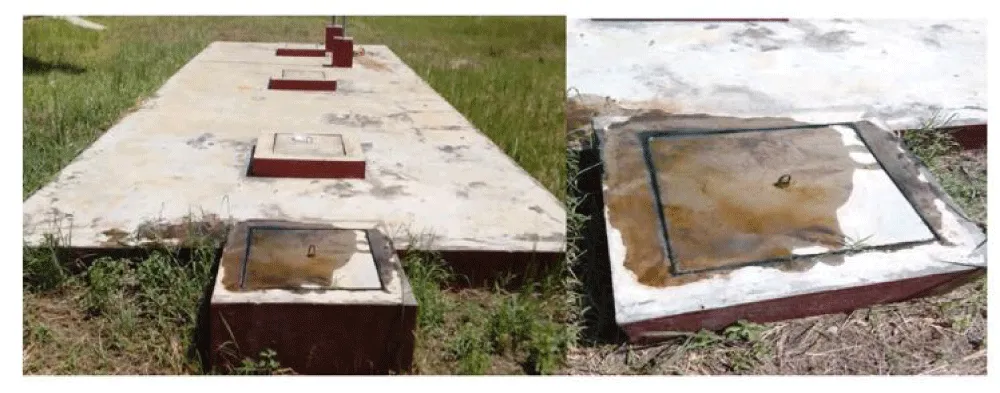
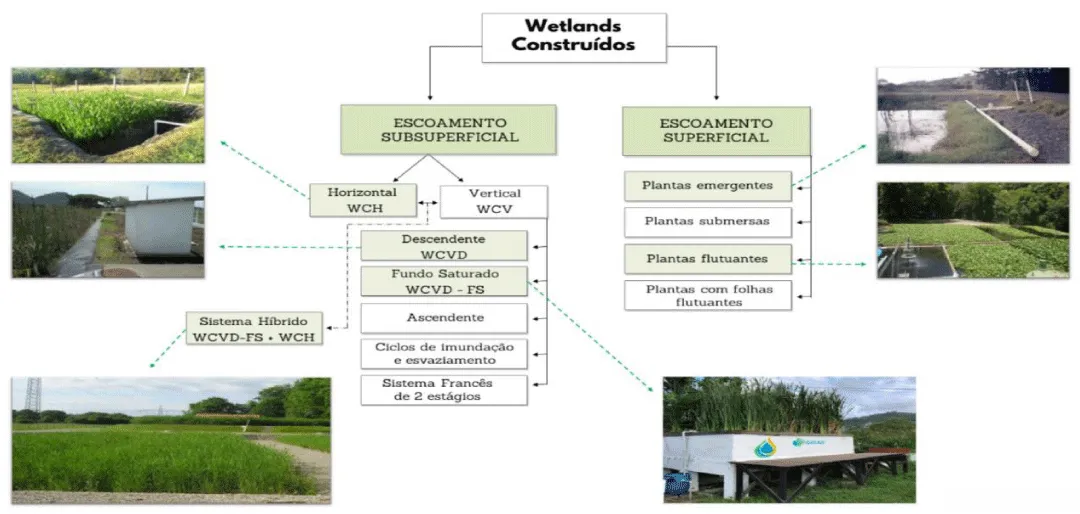

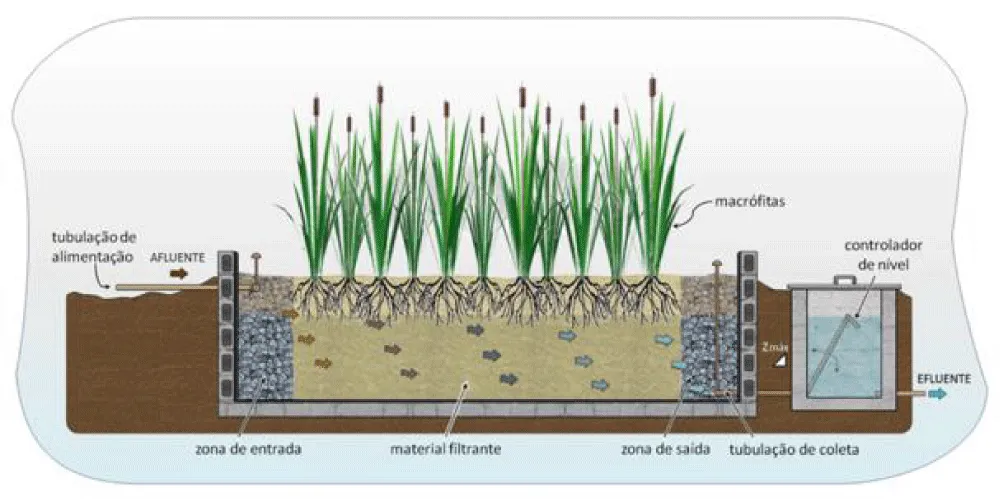
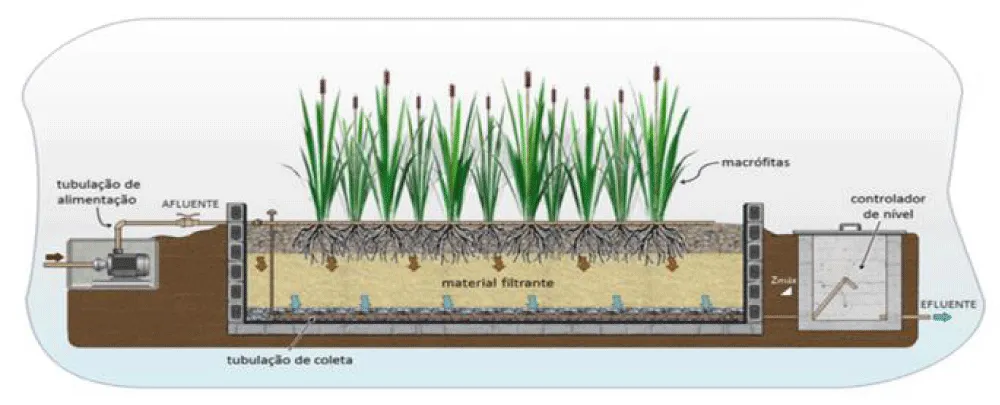
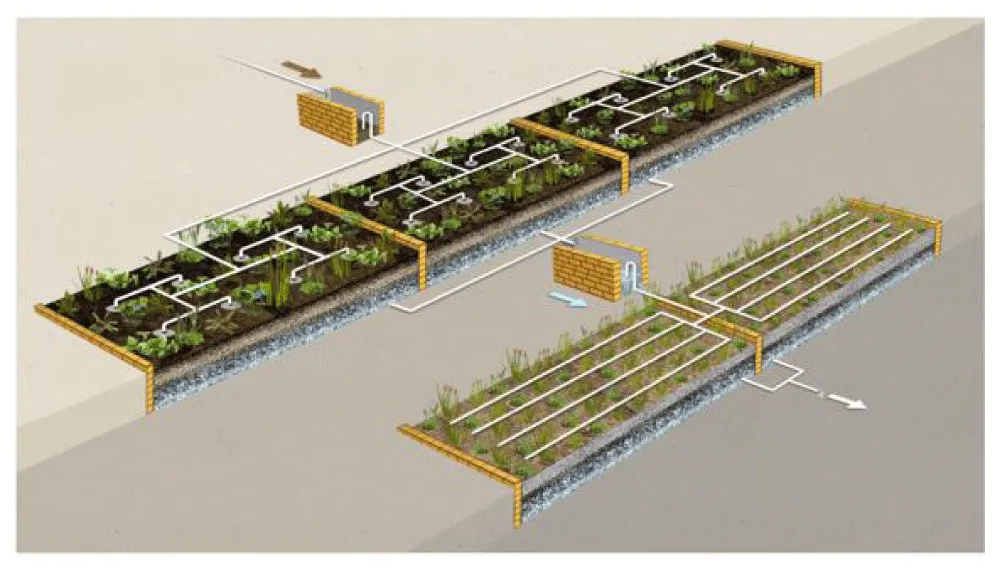
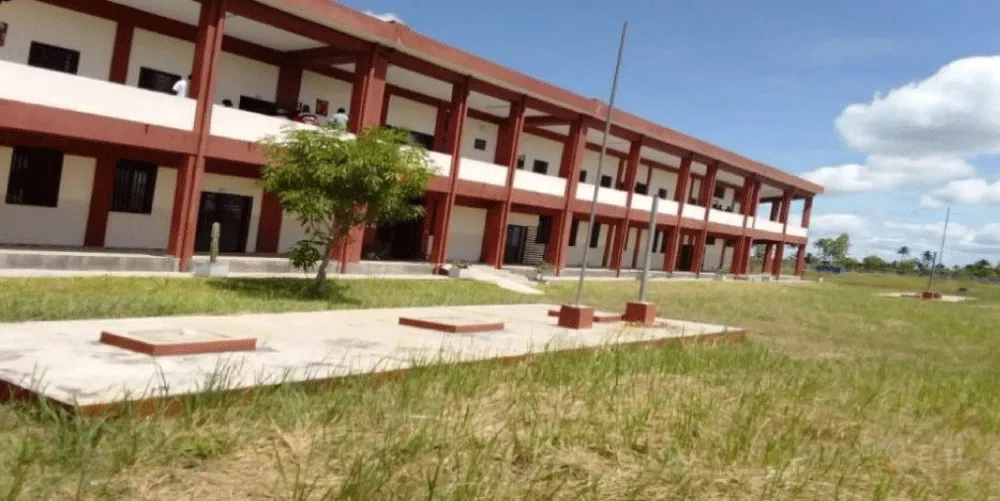
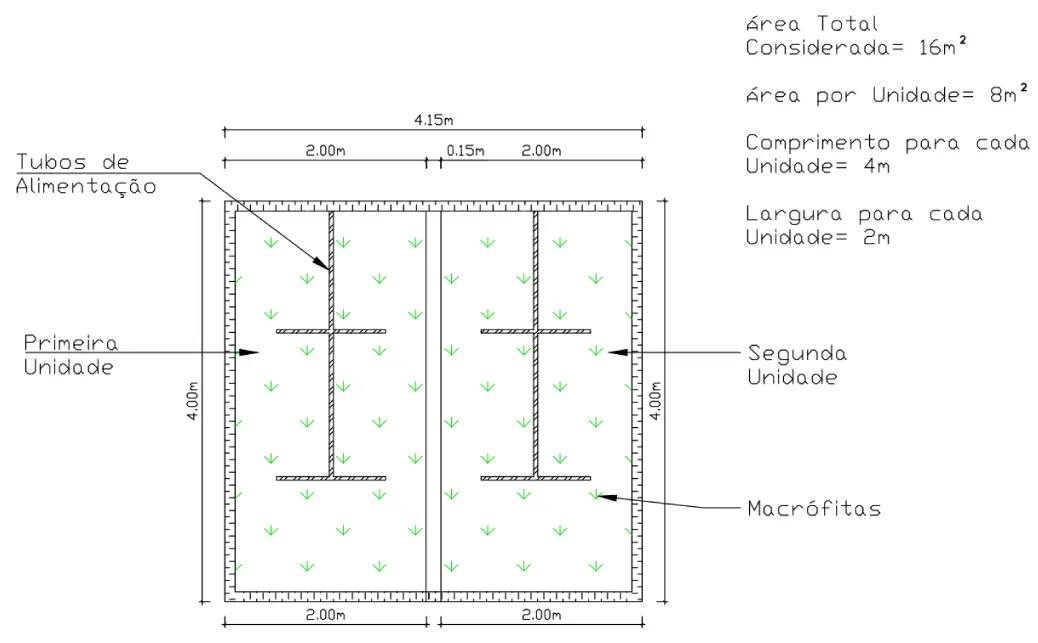
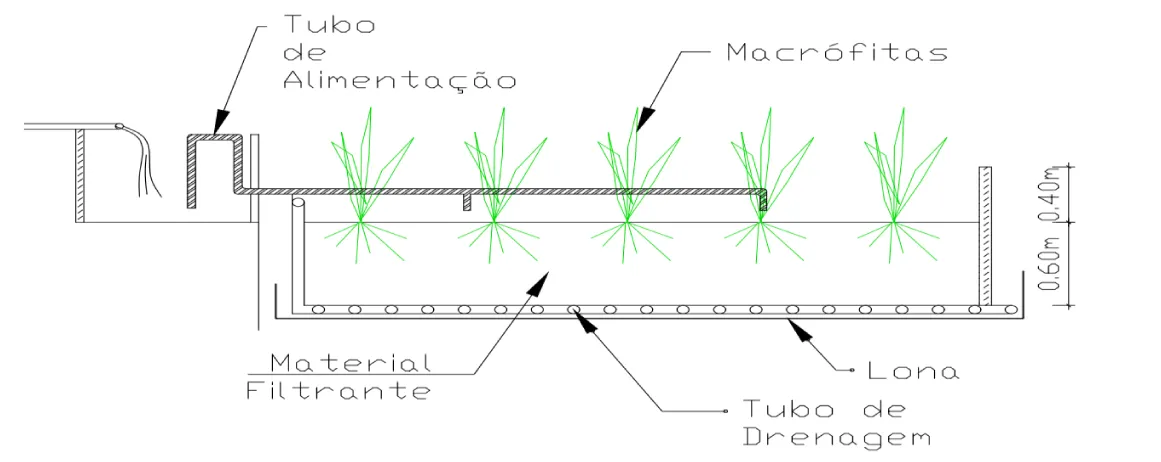


 Save to Mendeley
Save to Mendeley

